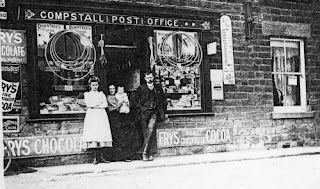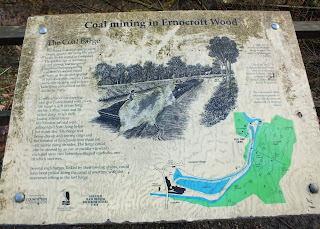We are indebted to Bob Abell and Peter Teal, both long standing members of the Boat Club, for compiling this short history of Etherow.
The Compstall complex of mills was built in the 1820`s by George Andrew, but an earlier waterwheel powered mill was built downstream by his father in 1804.
The Andrew family must have been very prosperous to afford the new site at Compstall as it would have taken years to build from a green field site.
The water system was very ambitious for its day! The river Etherow must have been dammed somewhere in order to build the giant stone weir with its sluice gates and tunnels.
What a job this must have been without the machinery we have these days
The lakes, complete with numerous sluice gates, must have been dug out by hundreds of canal navvies, including the connecting canal from the weir.
The lakes were the main power supply to the mill's three waterwheels.
One wheel was called Big Lily and was the largest waterwheel in Great Britain, being 50 feet in diameter by 19 feet wide.
Big Lily
Another view of big Lily
At its peak, the mill employed 2000 workers!
The village of Compstall was built by George Andrew's workforce, including housing for 800 workers, complete with St Paul's church, school, library, Village Hall and fire station.
Brave men going into places when everybody else is running out, but it does remind you a bit of the Keystone Cops. If you look on the left hand side of the Post Office, on George Street, you will recognise the door in this picture.
Early picture of the Compstall Post Office
A Co-op store was opened in 1851, further shops followed. The first church was the Wesleyan Methodist Chapel. The Andrew family built the multi-purpose Athenaeum in 1865. St Paul's Church of England church was built in the Early English style. Steam and gas lighting were installed in the mill by 1890, and these were replaced by electricity in 1915.
The local street names are all named after his children ..Montague Street, Andrew Street, Edith Street and more.
Montague Street
Later he built a Gas Works and installed gas lighting in the village.
Unusual view of the lake, with gasometer in left foreground
He had his own coal mine near the Glossop road, where the coal was brought down from the hills to the canal via a steep wagon incline and loaded into the barges. In later years, the coal mined here also powered the mill's steam engines.
One of the barges can still be seen today, rotting away near the weir.
Photographed in 2013
There is a second barge, reputed to be in floatable condition, hidden somewhere in the woods. Bob Abell found it and took this photograph.
Etherow Hall, some years ago
A more modern view
Information Board in Keg Woodlands
The Keg Cottage
He is buried in the church nearby, with an impressive monument to his family name.
You may have noticed this shop when coming out of the park past the post office,
It is still there and has not changed much at all.
Etherow Country Park
Etherow Country Park has only been open to the public since about 1967
Our club must have been formed a short while after that, also in 1967. We all owe a debt of gratitude to George Andrew as, without him, it is unlikely that we would have such a beautiful lake to sail on.
















.jpg)





No comments:
Post a Comment